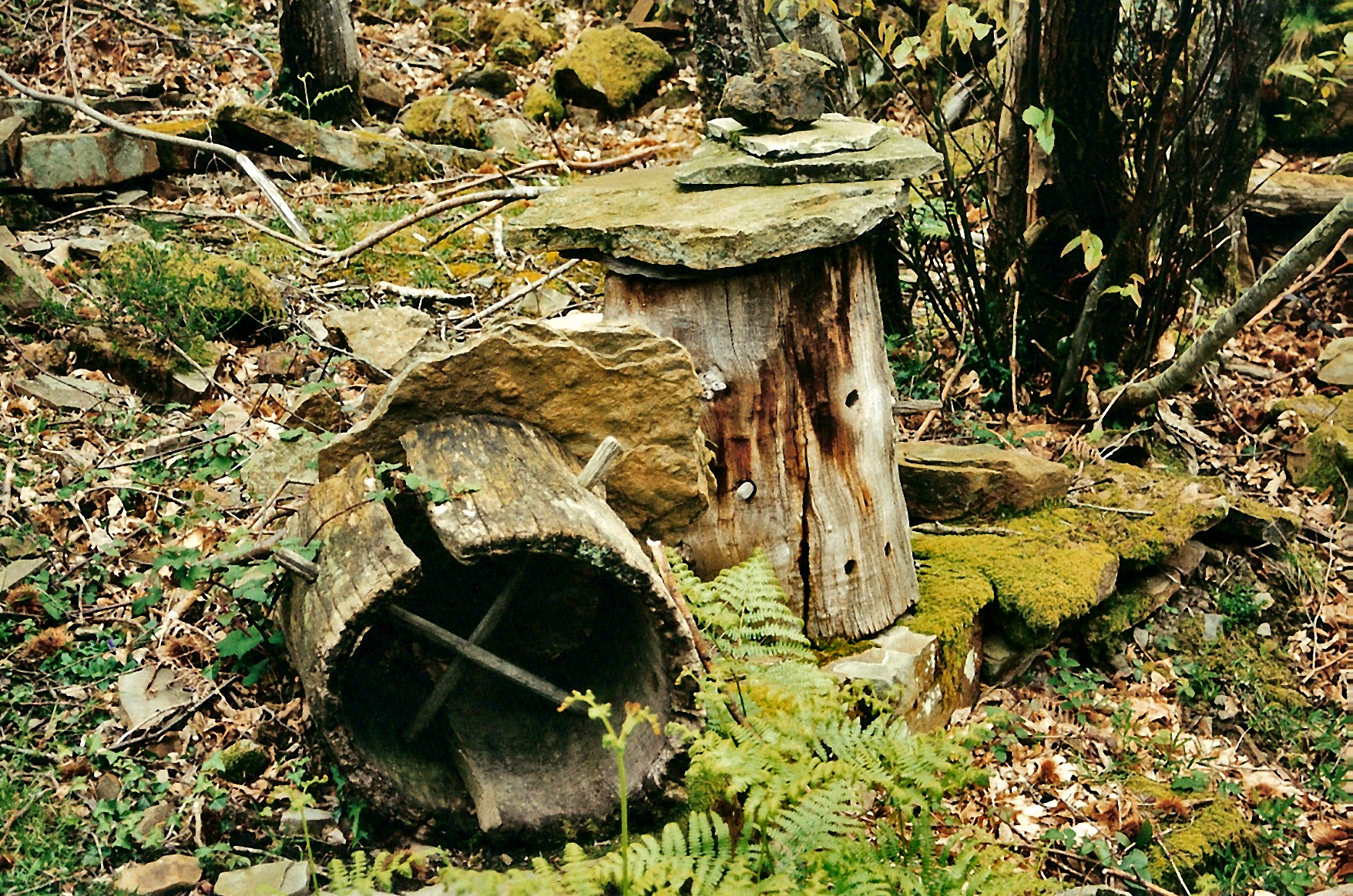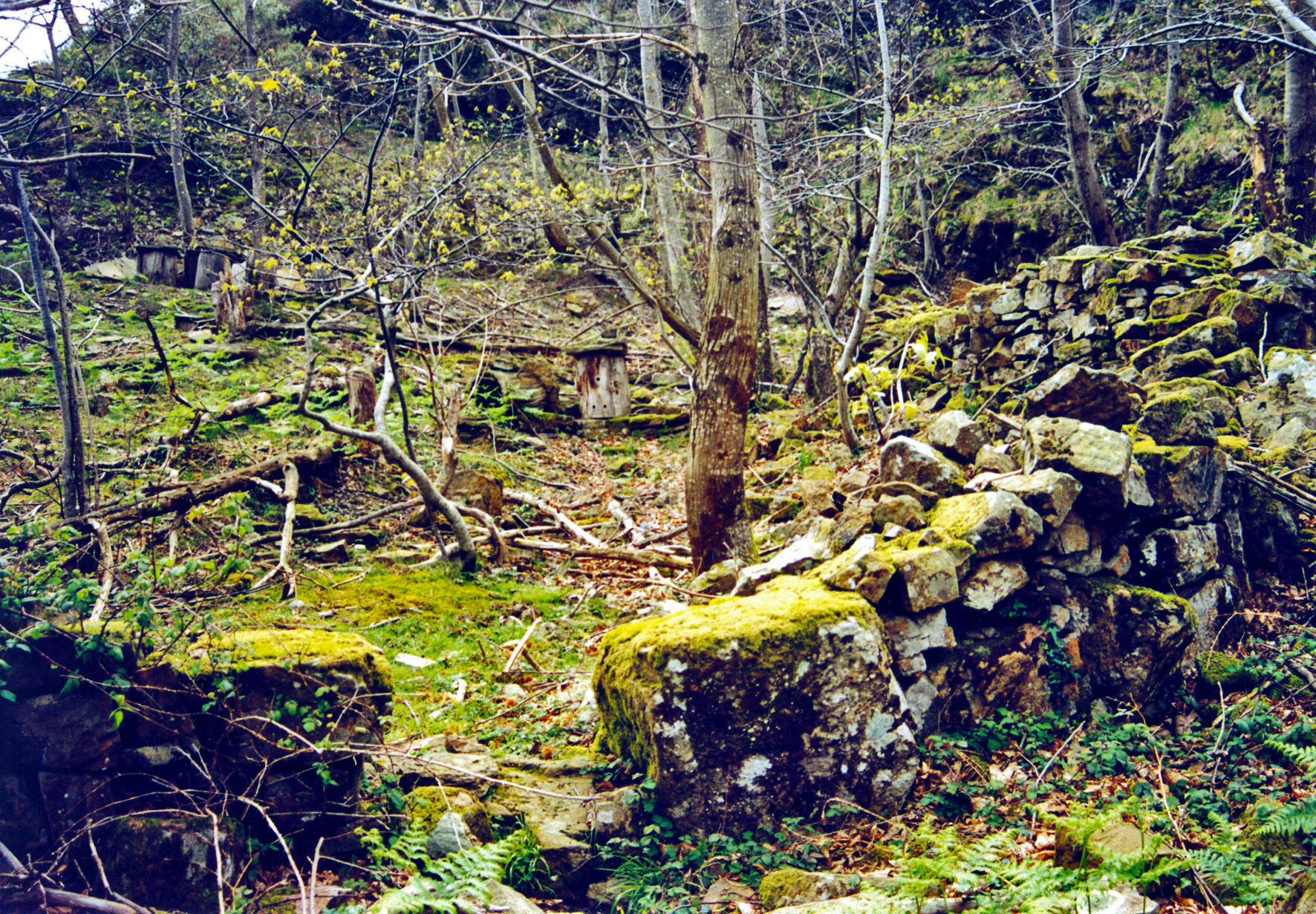Basque ethnography at a glance

Old chestnut log hives. Miguel Sabino Díaz.
In Carranza, up in the mountains of Ordunte, a spot known as Los Cepos Vinagre —The Vinegar Hives— in lands under Pando Council jurisdiction houses the remains of an ancient apiary, a real treasured asset of the local ethnographic heritage.
The site is located in an almost circular area 17 m in diameter fringed by rocky outcrops. The bee yard is enclosed by dry-stone walls 1.40 m high and between 80 and 90 cm wide, and it is accessible through a 60 cm wide entrance opening. The interior provides shelter to traditional log hives or cepos arranged in rows and standing on sandstone slabs forming terraces.

Remains of Los Cepos Vinagre apiary. Miguel Sabino Díaz.
This structure dates back to past times, when beehives needed to be protected from the attack of bears who roamed the steep sides of the high mountains in Pando, Bernales and Lanzas Agudas Council lands up to the last third of the 19th century.
Vicario de la Peña, in his work El Noble y Leal Valle de Carranza, gives account of the hunting of the last bear in the mountains of Carranza back in 1874. The named bear had caused extensive damage to the apiaries Pando neighbours kept in Rojamanillos y Llarao knocking down the beehives to eat the honey.
These defensive constructions are generally round or oval shaped, although they sometimes have square or rectangular floor plans. They are principally found in the north-east of the Iberian Peninsula, mostly in west Asturias and surrounding regions of León y Lugo, and are locally known as cortines. Along the central and eastern Cantabrian coast and in Cantabrian territory, apart from the Carranza apiary, more can be found in Loma Somera (Valderredible).
Miguel Sabino Díaz – Etniker Bizkaia – Etniker Euskalerria Groups
Translated by Jaione Bilbao – Language Department – Labayru Fundazioa

